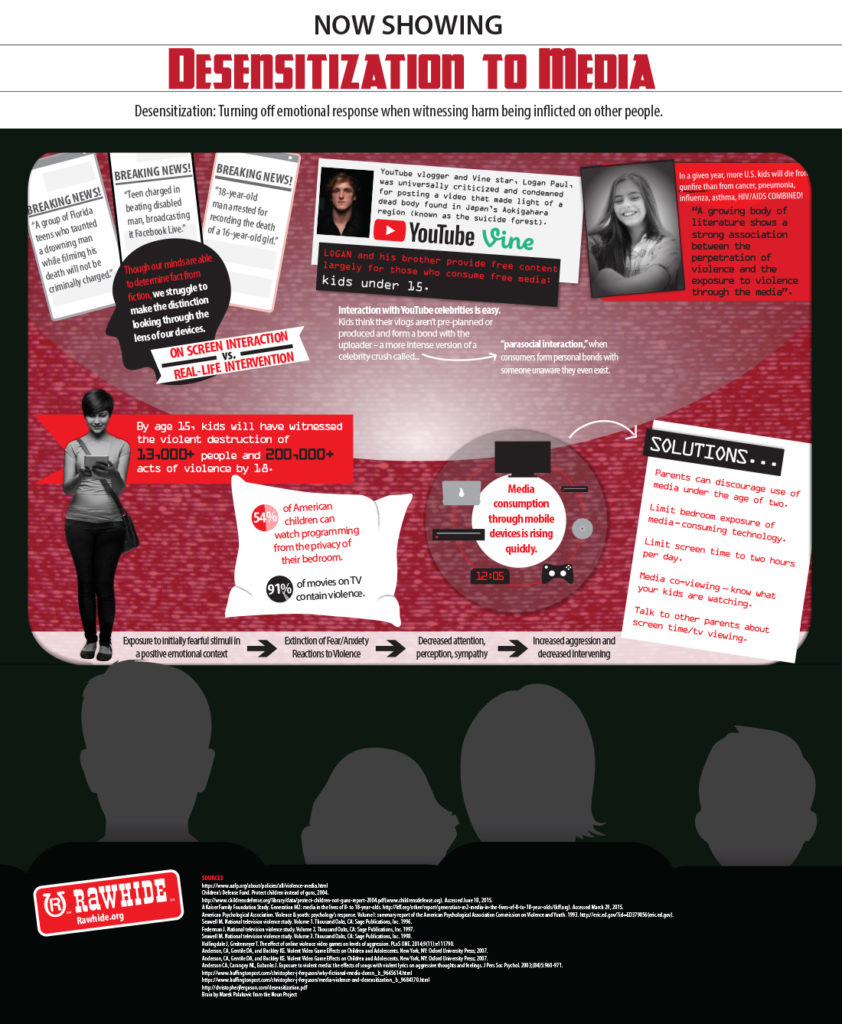When October rolls around with its pumpkin spice everything, crunching crimson leaves, and Halloween costume ideas, I find myself actually making plans to watch horror movies—a genre I would otherwise avoid. It’s just part of the season’s aesthetic.
When I hunkered down with friends earlier this month to watch the two newest seasons of American Horror Story, Apocalypse and 1984, I expected to go to bed scared and have trouble falling asleep. I expected to have that tingling feeling, like something or someone was creeping up behind me. I mean, “horror” is literally in the title. While there were plenty of jump scares throughout the episodes, I didn’t come away feeling genuinely scared. Instead, I felt queasy and utterly disgusted.
A friend of mine used the perfect phrase to describe these seasons: “violence-porn.” I quickly realized that these seasons weren’t employing scare tactics at all, but rather glorifying society’s growing obsession with intensely violent images.
Envision the scariest movie you’ve ever seen.
Is it one about the supernatural? Open bodies of water? Clowns? A grisly murder?
Mine is still a movie I’ve never actually seen. When I was about six, I caught five seconds of The Exorcist—that part where the girl’s head turns around on her shoulders—while my dad was flipping through TV channels. That image stuck in my head. I couldn’t sleep for practically a month, and I still refuse to watch the movie even though it probably wouldn’t be as scary as I’ve built it up in my head.
This experience kept me from watching horror movies for almost ten years, but another scene that crawled under my skin was from The Conjuring.
When I was a child, I was intensely afraid of the dark. Watching that scene when the demon pulls at the young girl’s ankles while she’s sleeping in bed immediately brought me back to that young, inexplicable fear. I had to sleep with my knees pulled up to my chest the night after watching that movie for the first time.

I’ve encountered many other moments in TV and film that instill that same uneasy, disjointed feeling even after the end credits roll: checking around the shower curtain the morning after watching Hitchcock’s Psycho for the first time, hesitating for just a split second before diving into a lake after watching Jaws. But what is it that makes these specific moments feel so visceral even when I haven’t watched those scenes for years?
According to Dr. Joanne Cantor—a professor who researches the causes and bodily responses of fear at the University of Wisconsin-Madison—there are three elements in a film that instill this striking reaction: “disturbing visual images, imminent threat and a lack of control.”
The perceived threat one feels when watching the killer creep behind the victim, when hearing the upstairs floor creak in a supposedly-empty house, ignites the more primitive part of the brain—the amygdala. The amygdala controls the bodily fear response fight-or-flight, which creates bodily reactions like increased heart rate, perspiration, and tremors. The ignition of the fight-or-flight response also increases activity in another part of the brain—the hippocampus. The hippocampus records the threat for future reference. So what do all of the moments in these horror movies have in common that makes them so unforgettable?
It’s the threat of danger. The tingling feeling that something bad is about to happen, but you’re not exactly sure what. It’s the intake of breath before the scream, the moment of looking under the bed before the monster is revealed. It’s the buildup, the feeling of powerlessness that you are unable to stop it—whatever it is.
And this is what the scenes of Apocalypse and 1984 lack. The characters’ actions of killing one another last far longer than the suspenseful moments leading up to the attack. This focus on the violence makes the moment less about the viewer’s response and more about the shock value of seeing someone’s blood and guts spilled across the screen.

The sheer amount of violence and deaths in these episodes also desensitizes the viewer to the idea that there should be fear connected to the action. Almost every character in the show is impaled, stabbed, gutted, or poisoned at some point throughout the two seasons. But this desensitization is nothing truly new. Violence is constantly displayed in the news, other genres of film, video games, and even the things we read. In the last twenty years, and especially with the growing prevalence of mass shootings, professionals and academics have conducted studies researching viewers’ increased aggressive behaviors—such as a higher tendency for physically or verbally abusive actions and decreased empathy—as a result of intensified violent content in the media.
According to Emanuel Tanay, a retired MD Clinical Professor of Psychiatry at Wayne State University, “You turn on the television, and violence is there. You go to a movie, and violence is there. Reality is distorted. If you live in a fictional world, then the fictional world becomes your reality.”
The representations of violent acts have become so consistent that, unfortunately, seeing yet another murder in itself—without the emotional, physical suspense tied to it—is not scary. Instead, these constant violent images in themselves have the power to affect viewers’ behaviors, and ultimately make them more aggressive.
And that increased aggressive behavior doesn’t always manifest in the atrocity of a school shooting or some other murderous act. It can be a small change, something practically overlooked, like a dream.
After binge-watching Apocalypse and 1984 with my friends over the course of a few weekends, I had a dream that I was the one stabbing someone. I had become the threat in the dream, rather than fleeing one. Coincidence? After looking into the effects of fear versus violence on the brain, I hardly think so. I took an indefinite break from watching American Horror Story after that.
We consume the media that is presented to us because it is available and easily accessible. We take it for granted, and we especially take for granted the power it has to affect our psyches. As Halloween rolled around again with its trick-or-treats, ghouls, and space aliens, take a moment to consider the movie you chose for your own horror movie night. Did you want to actually be scared, or just thoroughly disturbed?

